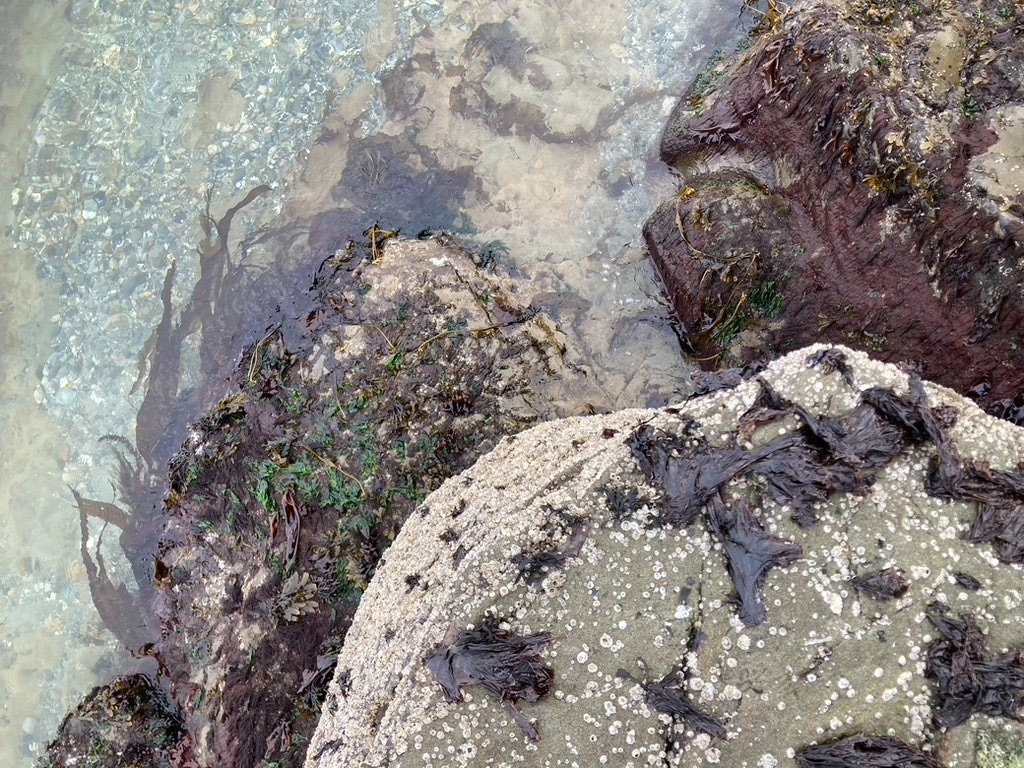
Seaweed
Resources
Seaweed Drying Instructions
-

Important Notes about Wild-Harvesting Seaweeeds
Despite the fact that there are few reports of incidents of acute toxicity or poisoning related to seaweed consumption, folks interested in foraging seaweeds should do their own research—consult with multiple field guides, seaweed books, reputable online resources, and/or local instructors to learn about safe and sustainable harvesting practices and how to properly identifying edible seaweeds in your area. Stick with easy-to-identify, known edible seaweeds as you embark on your intertidal explorations. Always harvest with caution and discernment—be aware of toxic seaweed species and potential contamination sources, such as off-shore sewage or waste-water disposal, industry, etc. Rinsing (with clean fresh water or salt water), properly drying and storing, pre-soaking and discarding soak water, and cooking seaweeds before consuming are some practices that can help reduce potential contaminants, though there are no guaranteed methods for eliminating all potentially toxic elements from seaweeds. Purchasing seaweeds from organic harvesters that properly process seaweeds and do regular testing for a range of contaminants is one of the best ways to limit the risk of consuming toxic or contaminated seaweeds.
Seaweed harvesting regulations vary from state to state. Be sure to check out your state regulations and licensing requirements before harvesting. Also be aware of private property and particular beach access regulations. Sustainable harvesting recommendations, in addition to those specific to state regulations, include harvesting no more than 10-25% of seaweeds in a stand and rotating harvest locations to give each site time to recover. Always use what you collect and never collect more than you can use.
🌊 Drying Seaweed at Home
Tips for preserving edible and medicinal seaweeds in your own home
✅ Best Conditions for Drying
Ideal: 2 sunny, dry days in a row—dry outdoors on a synthetic clothesline or stainless steel fishing wire in full sun.
Indoors: Use a wood stove or ambient heat source to dry.
⚠️ Avoid letting seaweed drip onto your stove—salt can cause rust and damage.
💡 Seaweeds are extremely hydrophilic. They’ll readily reabsorb moisture from the air and must be completely dry before storing. If you are sun drying your seaweeds outside, you may need to finish the drying process inside using another method (see “Finishing the Dry” below).
🛠 Surfaces + Hanging Tips
Seaweeds can stick to or react with certain materials: they may degrade metal and cotton over time.
Good options:
Non-galvanized nails (indoors)—remove any finish on new nails by soaking in vinegar and then boiling in water for 20-30 minutes. Rust on the nails is okay.
Stainless steel fishing wire or polyester/synthetic clothesline.
Cotton clotheslines will work but may degrade over time.
Whether using a line or nails, secure each seaweed piece with a clothespin, pressing it firmly down over the line (more firmly than you would when hanging clothes). Remove the clothespins toward the end of drying to prevent sticking.
🍃 Types of Seaweed + Methods
Large seaweeds (kelp): Hang individually on a line or nail.
Smaller types (nori/laver, gigartina/Mastocarpus spp., bladderwrack): Dry on racks covered with polyester sheets.🔥 Finishing the Dry
Final stage is crucial. Finish drying:
Near a wood stove or ambient heat source;
Outside on a dry, sunny day; mid-day, in full-sun; or
In a metal or ceramic baking tray in an oven on the “warm” or lowest setting (turn on/off every 10 mins to avoid overheating).
✅ Seaweed is fully dry when it snaps crisply when bent.
🚫 Dehydrators? Wooden Clothes-Drying Racks?
These are generally not recommended—seaweed tends to stick to plastic dehydrator racks and wooden surfaces.
Exceptions:
Round dehydrators with thick, open-plastic grates and some mesh plastic screens can work for small batches.
Wooden drying racks are okay if you remove the seaweed before it's completely dry and transfer it to a more suitable surface to finish drying.
💧Rinsing Before Drying
Only certain types of seaweed tolerate freshwater rinsing.
Recommended only for red seaweeds like Porphyra/Pyropia spp., Mastocarpus spp., and Mazzaella splendens.
Drain using a screen rack or colander.
Squeeze thoroughly before hanging or laying out to dry—seaweeds don’t easily release water.
📦 Storage
Store fully dried seaweed away from sunlight in moisture-tight containers:
Double Ziplocks
Food-grade plastic buckets with gasket-sealed lids
❌ Ball jars are not ideal—they may let moisture in.
✅ Well-stored seaweed can last years. While some vitamins degrade over time, minerals and micronutrients stay well-preserved.